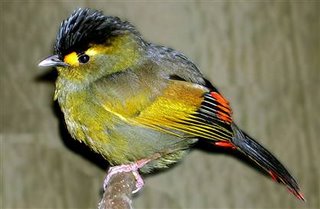A federal court decision has been handed down in Harrisburg, Pennsylvania over the Kitzmiller et al. versus Dover Area School District case. The defendant in the case was attempting to uphold the constitutionality of a Dover, Pennsylvania school board policy that required the teaching of intelligent design theory in the science classroom. The Dover school district mandated the reading of a statement that made Darwinian evolution out to be a problematic theory only required for the purposes of standardized testing while also saying that intelligent design (ID) theory was a viable scientific alternative. The board also required the creationist textbook Of Pandas and People, published by The Foundation for Thought & Ethics and authored by Percival Davis and Dean Kenyon, be made available for students in the Dover Area School District. The decision came down clearly and unambiguously on the side of the plaintiff. The decision can be read in it’s entirety here.
In that decision Judge John E. Jones III said of the defendants’ attempt to portray a secular cause for the school board decision,
Defendant's previously referenced flagrant and insulting falsehoods to the Court provide sufficient and compelling evidence for us to deduce that any allegedly secular purposes that have been offered in support of the ID policy are equally insincere. Accordingly, we find that the secular purposes claimed by the Board amount to a pretext for the Board's real purpose, which was to promote religion in the public classroom, in violation of the Establishment Clause. Kitzmiller et al. versus Dover Area School District, Page 132.
What’s more Judge Jones completely rejected any notion that ID was a science let alone a well supported science.
To briefly reiterate, we should first note that since ID is not science, the conclusion is inescapable that the only real effect of the ID policy is the advancement of religion. Kitzmiller et al. versus Dover Area School District, Page 133-134.
In making this determination, we have addressed the seminal question of whether ID is science. We have concluded that it is not, and moreover that ID cannot uncouple itself from it's creationist, and thus religous, antecedents. Kitzmiller et al. versus Dover Area School District, Page 136.
Also, the decision had harsh words for the defendants themselves as it seems that school board members were deliberately dishonest as to the origin of the funding for the Of Pandas and People textbooks.
It is ironic that several of these individuals, who so staunchly and proudly touted their religious convictions in public, would time and again lie to cover their tracks and disguise the real purpose behind the ID Policy. Kitzmiller et al. versus Dover Area School District, Page 137.
This decision joins many others since the trial of John Scopes in 1925. These decisions include the 1968 Supreme Court decision in Epperson versus Arkansas saying that the banning of evolution from the public schools is a violation of the Establishment Clause of the First Amendment and the Edwards versus Aguillard case that struck down a Louisiana statute that mandated equal time for creationism and evolution. The modern legal history of the evolution/creation debate has come down time and time again on the side of evolution and this latest decision constitutes a major blow to the strategy of using appeals to academic fairness and ID as a means to create a wedge to open up the public school system to a particular religious ideology.
The response from the ID crowd has been the predictable mix of outrage and victimization. The Discovery Institute, the premier clearinghouse for the ID ideas and one of the main fronts in the ID movement, is already screaming about judicial activism. On their webpage at www.discovery.org Associate Director of the Center for Science and Culture at the Discovery Institute Dr. John West says,
The empirical evidence for design, the facts of biology and nature, can't be changed by legal decree.
Strange coming from an organization backed by conservative, evangelical Christian legal organizations such as the Thomas More Law Center who sees appeals to school boards and lawsuits as the way to validate their ideas. Then West makes a vain an attempt at a positive spin on the Kitzmiller et al. versus Dover decision.
Americans don't like to be told there is some idea that they aren't permitted to learn about. It used to be said that banning a book in Boston guaranteed it would be a bestseller. Banning intelligent design in Dover will likely only fan interest in the theory.
I think Dr. West should remember that anyone in America can learn about any idea they wish, including ID. All the decision is saying is that it is a violation of the US Constitution to mandate learning about this topic in the context of the science classroom.
It will be interesting to see how the Kitzmiller et al. versus Dover decision will influence the ID movement especially in light of their recent successes in the state school board in Kansas. I think this decision will be much more of a blow to the ID movement than John West and others at the Discovery Institute care to admit. At the very least it has pulled back the veil on the fraud that is this appeal to intellectual fair-play and shown it for exactly what the ID movement is, a strategic wedge movement started by a California law professor, Phillip Johnson, to inject religious views into science and education.




